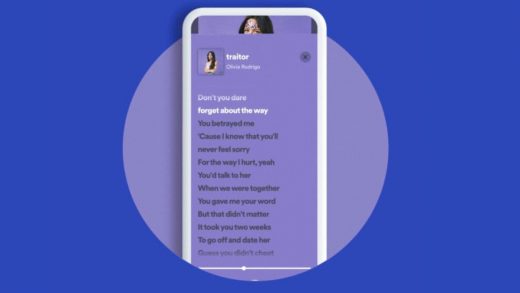
Dr. James Prager of Painted Hills Middle School in Desert Hot Springs, California recently reached out to PCD to see if we would be willing to donate playing cards to the school. With about 10 tons of playing cards in our warehouse, he had come to the right place. We were happy to help, but we were also curious. We wanted to find out more about how they planned to use the cards with their students. James and two of his math teachers, Steffany Castro and Keiry Mendez, graciously agreed to let us pick their brains and at the bottom you will see how you can help.
Here is what they shared with us.
The Love for Playing Cards Started at Home
PCD: Would you please introduce yourself and tell us your early memories of playing cards.
Castro: Keiry and I both teach math and this is the end of our third year. My early exposure to cards was primarily with magic and learning strategies to create tricks for people. I also liked playing Solitaire.
Mendez: Growing up, I played cards with my family. Our favorite game was Conquian. We played with four people and I liked that the game was all about strategy. This is one of the things that is great about introducing students to playing cards. With cards, the students have to think in order to win.
Prager: When I was really little, I played Go Fish. Later, I played War. And then with my Grandparents, we played 21.
Can You Really Teach with Cards?
PCD: How have you incorporated playing cards into the math curriculum at Painted Hills Middle School?
Castro: We started a math fun day that with activities by invitation. With the students who didn’t receive an invitation, we started playing integer wars so they could have fun with math concepts too.
Integer War
If it’s been a while since you were in a classroom, integers are the whole numbers, including zero and negative numbers. While it may seem obvious that it’s completely allowed to subtract seven from five, kids only familiar with positive number operations can struggle with this concept. Integer War is a card winning game like the game War where the black cards represent positive numbers, and the red cards represent negative numbers. There are many ways to play, allowing educators multiple ways to make it fun to learn about integers.
Prager: Initially, students who didn’t qualify for an event would come to my room where me and another teacher would use a couple of card decks to have the students do quick multiplication.
PCD: How do you plan to use playing cards to increase student engagement and interest in math?
Mendez: There is one game called Soldier Soldier General that Steffany and I have tried out, which you can do in groups of 2 or groups of 3. This game can involve adding integers or multiplying integers. We think this could be a fun way to get kids engaged with math.
Playing Cards are Profoundly Inclusive
We were intrigued to find out that the teachers were not only using cards to teach math concepts to the students, but also as an opportunity to include kids who may have otherwise been left out of the math fun day. We soon learned that playing cards can be a powerful way to bring kids together who might not normally interact at all, broadening the social opportunities and fostering connections between students.
PCD: Besides mathematical skills, how else do students develop through card games?
Prager: We have something called lunch bunch for students who might not have a friend to sit with during lunch. We were also able to get some Uno Cards donated. Now students go up and get their lunch and then they can come play Uno together. One good thing about playing cards is that you can have two students who don’t like one another but when it comes to cards, they are willing to set those differences aside to see who is better. This can lead to new friendships.
Mendez: Card games are really about strategizing, and that gives students a problem-solving skill that is needed outside of math in the real world.
PCD: How have students responded to using playing cards in class? Are there any success stories that stand out?
Mendez: In our classroom, we created an escape room, and one of the puzzles included cards. For instance, we would put things on the cards and then students had to match them. Cards had specific images that were part of codes that would get them to the next room. At first, they didn’t know what they were doing, but in a team setting, individual students would point out connections and little by little, the team would figure it out. The students really enjoyed this activity and have been asking when they will have another escape room.
The Challenges to Overcome
In 1941, Desert Hot Springs California had only 20 residents. In 2000, that number was over 16,000 and it was over 28,000 in 2014 (source). The population is booming and highly diverse, but there have also been struggles. Over a quarter of Desert Hot Springs residents live in households below the poverty line, and the town itself filed for bankruptcy in 2001. That isn’t about to stop Painted Hills Middle School from doing everything possible to ensure their students get the best education.
PCD: What challenges have you had implementing this and other enrichment programs?
Castro: We have to figure out how to sort the kids because we definitely don’t want to have a high achieving kid paired someone who struggles, so grouping is something that we have to keep in mind.
Prager: Our school is 99% free and reduced lunch, and we have significant diversity with language and every area of diversity. Resources are extremely limited and even taking the kids to a soccer game can be a challenge as we figure out how to get the buses we need. But when we figure it out, even little things mean the world to the kids.
PCD: Are there any other tools or resources you have used that might surprise people?
Castro: We do a lot of printouts ourselves and use whatever we have. We use paper clips as placeholders to play a game called 5 in a row. The game is like tic-tac-toe, at the bottom of the sheet the kids have to do multiplication to get the answer.
Mendez: We use balloons and sticky notes, even the ceiling tiles.
PCD: What advice would you give to other educators interested in integrating similar hands-on learning tools into their teaching?
Castro: I think it’s important to let go of that fear to try something different where the students are in control. I would just say, try it.
Mendez: Don’t give up, keep on trying. Students may not get it at first, but if you keep on trying, they can pick it up.
PCD: For our final question, please tell us your favorite card game?
Castro: I am really competitive, so I like Speed.
Mendez: I still love Conquian and have taught it to a lot of people
Castro: including me!
How You Can Help
We want to extend our thanks to James Prager, Steffany Castro and Keiry Mendez for taking the time to give us a view into how they approach educating the students of Painted Hills Middle School. We were honored to donate some decks of playing cards to help them in their mission, and there are ways for you to also help. If you would like to support the Math Teachers at Painted Hills Middle School, your donations will be matched by CBS and Young Sheldon as part of their efforts to support STEM projects at Equity Focus Schools.
You can use the following link to contribute: Ready for Success | DonorsChoose project by Ms. Mendez


